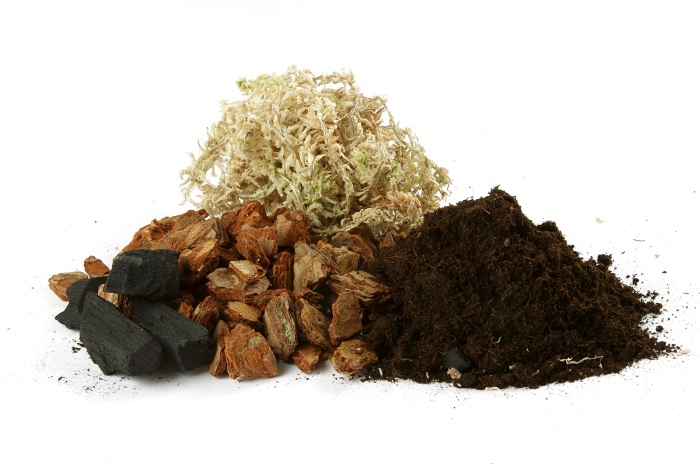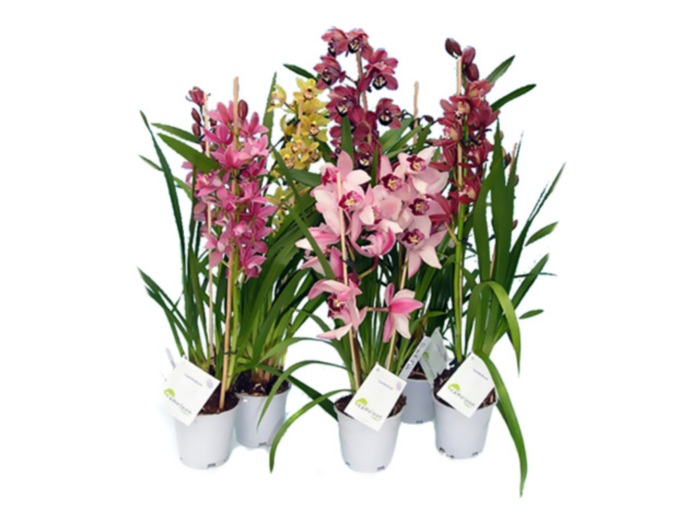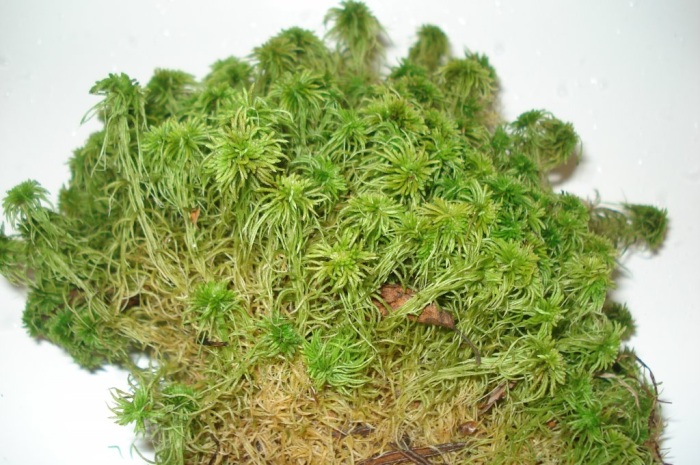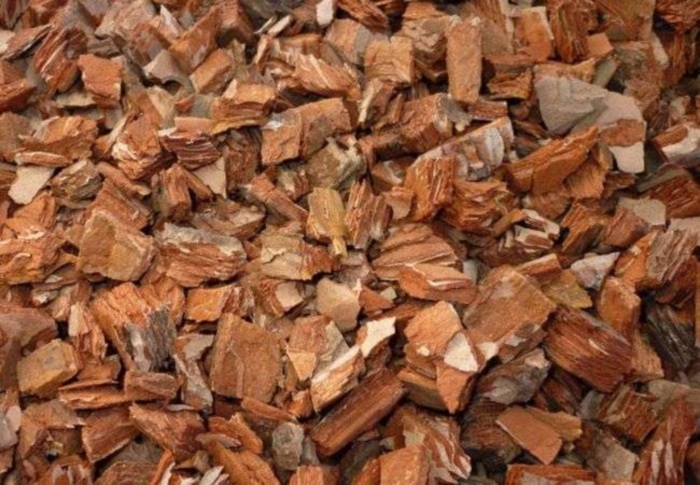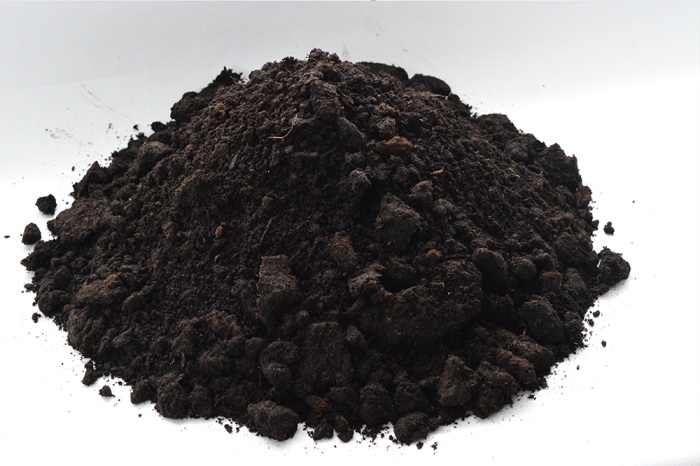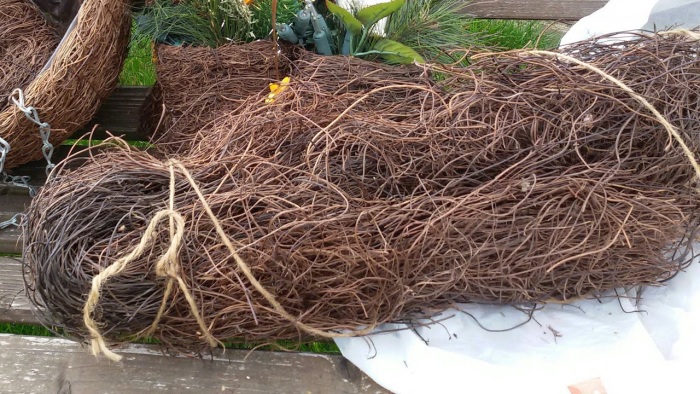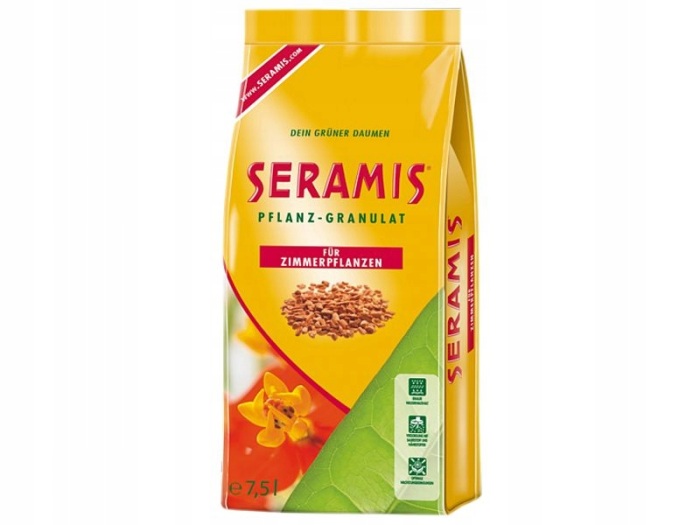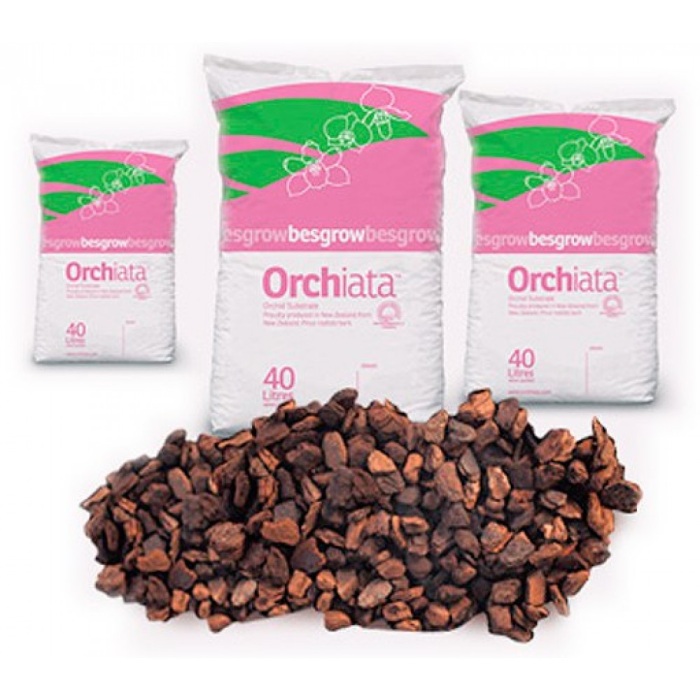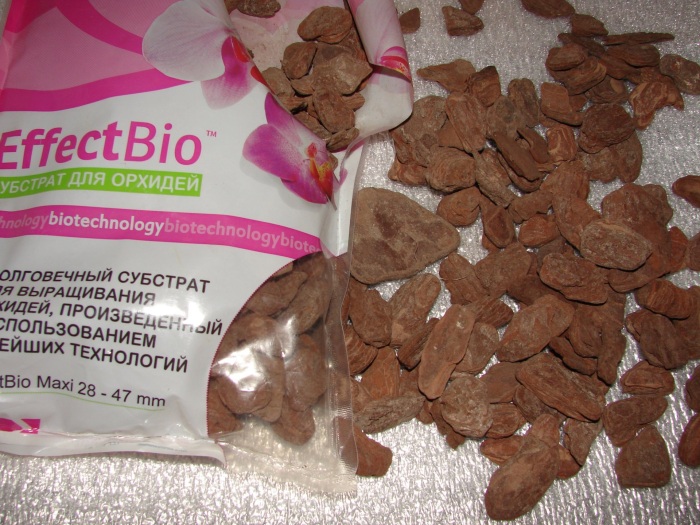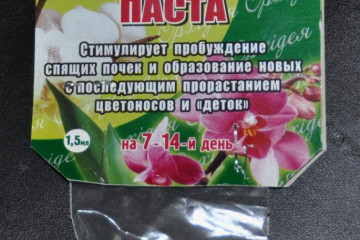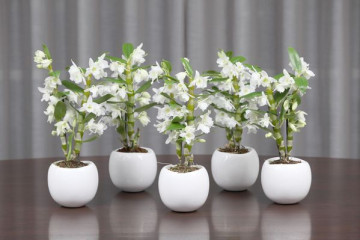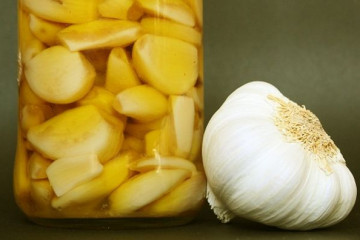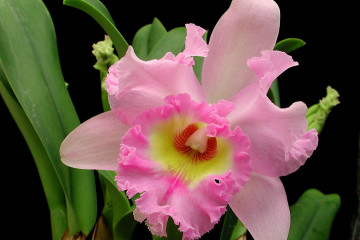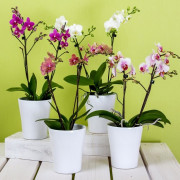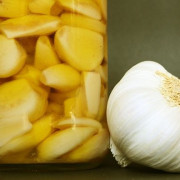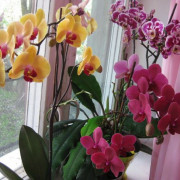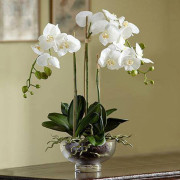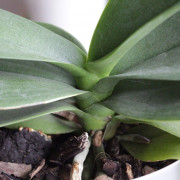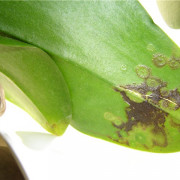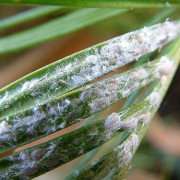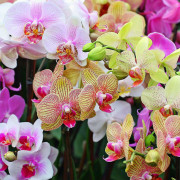Orchid substrate - which is better for growing
Content:
Beautiful orchids are capricious plants. Like any epiphytes, they are very sensitive to the composition of the soil. You need to choose the right substrate so that these exotic plants please with their flowering.
What are the requirements for the substrate
What soil is needed for an orchid is determined depending on the type of flower and the conditions for its maintenance, in particular, on humidity. The drier the air in the room, the more moisture-absorbing the potting soil should be.
Orchid soil must meet the following requirements:
- Sterility. The soil should not contain pathogenic flora and fauna. The less even useful microflora in the substrate, the better for orchids. In living nature, they grow on tree trunks, where such a microcosm as in the soil is practically not formed.
- Unchanging structure. The soil should not rot and decompose, this can be fatal to the flower.
- Slightly acidic composition. The most optimal pH level is 5.5-6.0. For some species, it can reach 6.5 pH, but no more. The acidity of the soil is determined using a litmus test. To do this, put a little substrate in a clean vessel and fill it with distilled water. Litmus paper is dipped there for 30 seconds. Depending on the acidity, it will change color. There are also special meters for soil acidity, they are sold in garden supply stores.
- The ability to retain moisture when the air is dry.
- Lightness and friability, the ability to provide easy air access to the roots of the epiphyte.
Can ordinary land be used
This question cannot be answered unequivocally. There are many orchids, and among them there are not only epiphytes growing on trees, but also lithophytes living on bare rocks. Lithophytes include some species of papiopedilum ("Venus shoes"), familiar to all phalaenopsis and lush dendrobiums. All of them can grow as epiphytes.
There are also terrestrial orchid species. These are calante, bletilla, cymbidium, some of the papiopedilum and playone. You can also plant Makodes, Gemaria, Gudaira, Anectochilus in a pot of soil.
Sphagnum moss as a substrate for orchids
Florists constantly argue about the use of this material as a soil for orchids. It has its pros and cons.
The advantages of sphagnum (peat) moss:
- The presence of sphagnol is a phenolic compound with bactericidal properties. Such a substrate will turn out to be sterile, which is what is needed for growing orchids.
- The ability to accumulate and store moisture. Water in sphagnum is evenly distributed.
- Moss can be used both fresh and dried, its properties do not change.
- The sphagnum soil is good, light and loose, which is optimal for epiphytes.
- When water evaporates, magnesium and calcium salts are deposited on the surface, which prevents the flower from developing normally. Sphagnum mulching prevents rapid salinization of the substrate.
The negative sides of the material appear only if it is used incorrectly.
Disadvantages of sphagnum as a soil for orchids:
- Insufficiently dried or waterlogged moss can develop insect pests.
- The material decomposes quickly. It needs to be changed at least 2 times a year.
- After a while, the moss may be compressed. In this form, it makes it difficult for oxygen to reach the plant roots.
- Dry sphagnum is capable of absorbing water 20 times its volume. This makes it difficult to calculate the liquid for irrigation.
Pine bark
The closest to a natural substrate. The bark evaporates moisture, the roots of the epiphyte absorb it. Orchids adhere well to pine bark soil and easily maintain an upright position.
Oak bark is even better, but this is already a premium class, since it is more difficult to separate from the trunk than pine, and has greater strength.
DIY pine bark substrate for orchids is a completely worthy replacement for ready-made store mixes.
Lowland peat and coal
In its pure form, peat as a substrate for orchids is not recommended to be used even for terrestrial species.
The root system of the flower decays at the moment. Low-lying peat can only be used as an additive in a mixture, combining it with bark, charcoal and other components.
Fern roots
The roots of osmunda royal were used for growing orchids much less often than pine bark, but they were no worse for them. Now this fern is included in the number of protected species, and it is strictly forbidden to let it on the substrate. More common plant species have the same qualities:
- do not cake;
- retain moisture well;
- air and light permeable;
- contain many trace elements useful for orchids.
The soil cannot consist entirely of fern roots, they are the same additive as peat.
With a large amount of this component, the substrate becomes too moisture-consuming, which contributes to decay of the roots.
Soil
In flower shops you can often find the so-called soil for orchids ("Flora Orchid", "Plan Terra"). Experts do not like it very much and do not recommend it for use even for terrestrial species that prefer a heavier substrate. For phalaenopsis, whose roots are actively involved in photosynthesis, such a dense, fine-grained soil is not suitable at all.
The most popular purchased substrates and soils
Seramis for orchids is small clay granules with bioadditives (phosphorus, potassium and nitrogen). Those. and land for orchids, and fertilizer at the same time. The composition of the substrate, in addition to clay particles, also includes pine or larch bark.
This primer is reusable. Even after a plant has died, it can be applied by simply rinsing and calcining in the oven.
Phalaenopsis love him. Their babies take root in this mixture very quickly.
The soil easily maintains the necessary moisture, but the root system in it does not rot. When using the mixture, frequent orchid transplants are not required.
Seramis has not yet revealed any negative properties.
Orchiata for orchids is made from specially processed shredded bark of radiant pine from New Zealand. The soil does not require special treatment, it is good for air and moisture, does not contain toxins and harmful microorganisms. Unlike seramis, it cannot be reused.
Bio effect for orchids. It includes:
- Angara pine bark;
- trace elements: iron, magnesium and zinc;
- coarse peat;
- charcoal;
- coconut fiber.
When using such a soil, the plant is easy to fill, because it retains moisture too much, which contributes to rotting of the roots.
Substrate treatment
If for some reason it is not possible to purchase a ready-made substrate for orchids, you can prepare the substrate yourself. Self-assembled components, such as pine bark, must be carefully processed.
Selected ideal pieces of bark must be cleaned of contamination and sent to a cold place to soak to get rid of insects.
Then heat treatment is carried out:
- Break a large piece of bark into several smaller pieces and lay it on the bottom of unnecessary dishes (an old steel or aluminum pan, as well as a galvanized bucket, will do).
- From above, the bark is pressed with a cobblestone or other oppression so that the future soil does not float up.
- The container is filled with water, not reaching about 5 cm to the edge. Put on fire, bring to a boil, reduce heat and cook for at least an hour.
- Then the water is drained, and the bark is thoroughly dried in an oven at 100 ° C.
DIY soil preparation
Some growers prefer to prepare orchid soil at home. So they are sure of the components used and their correct processing.
So, soil for orchids: do-it-yourself composition. It includes:
- sphagnum moss;
- low-lying peat;
- fern roots;
- pine cones and bark;
- charcoal (It is better to collect the one that remained after the fire; purchased coals can be additionally treated with a combustible compound. If the fire was kindled with a special liquid, coals cannot be taken from it);
- vermiculite;
- expanded clay;
- perlite;
- dolomite flour;
- coconut fiber.
Some people also add foam here, but there is an opinion that under certain conditions styrene is released from it, which is harmful to orchids.
The ingredients listed above do not have to be used all at once. You can make compositions from some substances:
- charcoal and pine bark (1: 5);
- bark + sphagnum + coal (5: 2: 1);
- bark + peat + expanded clay + coal + dolomite flour (3 + 1 + 1 + 1 + 1).
Step-by-step instructions for preparing the substrate:
- Cook and arrange all ingredients.
- Boil the bark.
- To sort out the sphagnum, discarding all unnecessary.
- Mix the ingredients in the correct proportions.
- Check acidity.
- Pour the soil into the pots.
- Plant a flower.
Despite all the capriciousness of orchids, at home you can make soil that will be no worse than purchased. If you adhere to these rules, the tropical inhabitant will delight you with health and lush flowering.
